 Here I will quote from several sections in Hans’s response to my first essay and offer responses to each of them.
Here I will quote from several sections in Hans’s response to my first essay and offer responses to each of them.
Most intriguing is your concept of non-interventionist objective divine action, the idea that “God acts in nature without blocking, suspending, or undercutting the normal regularities of natural processes.” You also emphasize how this understanding of divine action does not conflict with science. And yet I find myself asking, what’s so bad about interventionist objective divine action? Why is it so important that your proposal not conflict with science? This constraint seems to place science in the methodological driver’s seat; theology must then stay within the limits laid down by our current science . . . why should any Christian think that God doesn’t sometimes act differently in and through his creation—especially based on what we read in Scripture?
My response to these great questions!:
What’s the Problem?
Hans asks:
“What’s so bad about interventionist objective divine action?”
Well nothing per se—I do in fact believe that God acts in miraculous ways as witnessed to in the Bible, in church history, and in countless accounts of astonishing events in people’s lives. But is this best understood as “interventionist divine action?” Probably not. It is true that in most current theology/science literature the term “miracle” almost always presupposes Hume’s eighteenth-century philosophical definition of a miracle instead of the biblical and theological definitions. Recall that Hume defined a “miracle” as an event which breaks or violates a law of nature and thus God, as the worker of miracles, as “intervening” in nature.David Hume, Of Miracles, Section X.
That philosophical definition has continued, all too often, to overshadow the traditional theological meaning of “miracle.” For example, Augustine viewed everything in the world as a miraculous act of It is a “proleptic event,” a manifestation or appearance of the New Creation within the ongoing processes of this present creation. I like to refer to the Easter event as “more than a miracle.”God.Amplifying this point, Augustine held both an epistemic and an ontological view of miracles. For Augustine, epistemically a miracle is not contrary to nature but only to our knowledge of nature. Today this would be called ‘miracle as epistemic ignorance.’ Ontologically, however, miracles are unusual events in nature made possible by nature’s hidden potentialities given to it by God. Augustine, City of God, XXI.8.2. Aquinas gave a more elaborate, three-fold definition of miracles.Aquinas, Summa Theologiae, I. q. 105, aa. 6-8. According to the neo-Thomistic scholar Michael Dodds, “God may produce effects that are beyond the power of nature. He may also restrain secondary causes from producing their normal effects or produce those same effects directly by his causal power alone . . . In all of these actions, God’s influence is not contrary to nature.”Michael J. Dodds, O. P., Unlocking Divine Action: Contemporary Science & Thomas Aquinas (Catholic University of America Press: 2012), 253.
Building on these theological understandings of miracles, I affirm the miracles witnessed to in the Bible are, in most cases at least, witnesses to actual historical events in human life and in nature. This statement requires a great deal of unpacking. However, given the shortness of this response, let me simply restrict our attention to two paradigmatic events recorded in the New Testament. First, the miraculous rising of Lazarus is, in fact, a miracle in the form of a resuscitation: Jesus brings his friend back to life (a miracle) but Lazarus will eventually die. It is an event that goes far beyond the normal flow of events in nature, as Augustine and Aquinas suggest. But secondly, the bodily resurrection of Jesus by God the Father at Easter is much more than a mere resuscitation: instead it involves the transformation of the processes of nature surrounding Jesus and his disciples. Drawing on language from Pannenberg, the Easter event manifests the way the New Creation will be for us all following the general resurrection in the eschatological future. It is a “proleptic event,” a manifestation or appearance of the New Creation within the ongoing processes of this present creation. I like to refer to the Easter event as “more than a miracle.” It is, in fact, the “first instance of a new law of nature” (FINLON).
With this in mind let’s return to the conversations in the theology/science literature where Hume has had such an extensive impact. My goal here is to play the “devil’s advocate,” namely to take the challenge from Hume onboard, not because he gets “miracles” right theologically but because he is the ‘bête noire’ that implicitly sets the agenda of the conversation on divine action, and that’s what I want to challenge. In essence, let’s stipulate that Hume gets the idea of miracle right, even though he doesn’t. The question I’m raising is whether Hume restricts us philosophically to just two categories of divine action: miraculous aka interventionist divine action and ordinary aka non-miraculous, non-interventionist divine action. The first category puts theology at odds with science; the second offers a truce between theology and science, but at the expense of evacuating the traditional concept of miracle and reducing the purportedly miraculous events into entirely ordinary, natural events which theology typically calls “general providence.”
My response is that those are, in fact, the best two theological options if the world is intrinsically deterministic, as we thought it was following the overwhelming success of Newton’s classical physics. In the Newtonian, mechanistic worldview, the world was like a clock changing inexorably because of fully deterministic forces acting at the bottom level of complexity in nature: physics. This is the world in which Hume lived and conjectured. In this mechanistic worldview, based on classical physics, Hume made four conclusions:Contrary to atheism, God acts to help bring about new outcomes precisely where all that science sees are random outcomes. 1) we now know the entirety of the laws of nature, and they are the Newtonian laws of physics; 2) the laws of physics are true ontologically and hold eternally; 3) the physical laws are strictly deterministic; 4) all causality in nature is ‘bottom-up’: the causality found in physics determines all natural processes in more complex systems, including biological and psychological ones.
If Hume were right, it would be hard to understand divine action which purports to make a difference in nature without an entirely interventionist view of such action. But today we should strongly question all four of Hume’s assumptions. The one I will highlight here is the third one. If we now know that there are levels of natural processes which are intrinsically indeterministic, then a third mode of divine action is possible: non-interventionist objective divine action (NIODA).Robert John Russell, Cosmology from Alpha to Omega: The Creative Mutual Interaction between Theology and Science (Minneapolis: Fortress Press, 2008), chps. 4-6. Here God, acting with, under, and through nature, brings about events which otherwise would not have turned out the way they did (i.e., counterfactual divine action).
Is there reason to believe that nature at some level is indeterministic? Yes! Quantum mechanics (QM), one of the two pillars of twentieth-century physics (the other being special relativity) can be interpreted, following the Copenhagen school (Bohr, Heisenberg, etc.) as pointing to just such an indeterministic realm of natural processes. The scientific fact of QM, interpreted by philosophy in terms of indeterminism, can then be taken up into theology, leading to the theological claim that God, acting in, through, and with nature, can bring about counterfactual events thanks to the insights of QM interpreted philosophically in terms of ontological indeterminism.
Now here’s the punch-line: Amazingly, QM-based indeterminism applies in profound ways for evolutionary biology at the level of genetic mutations, since mutations rely on quantum events, they require the making or breaking of a covalent bond during a mutation, and this in turn is an inherently quantum mechanical process. This then means that theology can claim that God acts, or more carefully the results of divine action occur, in mutations that influence the future course of evolution.
We’re done: Contrary to atheism, God acts to help bring about new outcomes precisely where all that science sees are random outcomes. Contrary to Intelligent Design, we don’t (and shouldn’t) add a new mode of explanation for evolutionary biology, ‘intelligent agency,’ since divine action is a theological concept for interpreting science, not a part of an explanation introduced into, and violating, methodological naturalism.
Who’s Driving?
This segues nicely into the second question:
“Why is it so important that your proposal not conflict with science? This constraint seems to place science in the methodological driver’s seat; theology must then stay within the limits laid down by our current science.”
Again, the answer is pretty simple: The interdisciplinary field of “theology and science” involves a specific method for bringing science into the theological conversation, one which has been articulated and developed by a variety of scholars starting with Ian G. Barbour’s pioneering writings in the 1960s.I also believe that theology can offer interesting suggestions for future scientific research, but that’s a separate issue under my rubric of “creative mutual interaction” (CMI). See Russell, Cosmology, Introduction. It asks what can we learn about nature from a discipline, namely natural science, based on methodological naturalism (e.g., seek to explain states in nature as much as possible as the effect of natural causes). As long as methodological naturalism does not lead a scholar into metaphysical naturalism (i.e., a worldview in which there are only natural causes, sometimes referred to as “scientism”), the results of what we learn scientifically about nature can, and should, be introduced into the ongoing project of systematic theological reflection on Scripture, tradition, reason, and experience (to use the Wesleyan quadrilateral as a helpful example of theological method).
So, in short, I do not see myself as placing science in the “driver’s seat” but instead as giving it a respected seat at the theological table, a voice to which theology should listen with honesty and integrity.
So, in short, I do not see myself as placing science in the “driver’s seat” but instead as giving it a respected seat at the theological table, a voice to which theology should listen with honesty and integrity. CTNS is a program to do just that: to create a chair for our scientific guests to sit at the table of Christian fellowship and contribute to the ongoing life of faith via fides quaerens intellectum (“faith seeking understanding”). Theology must never stay within the limits laid down by our current science, but it should grow beautiful new flowers of spiritual wisdom from, in part, the rich grounds of the bounteous discoveries about nature which science laboriously and diligently produces for a wider cultural and inter-religious understanding.
Let’s now turn to a third question in the previous quotations:
“Why should any Christian think that God doesn’t sometimes act differently in and through his creation—especially based on what we read in Scripture?”
Hopefully that question is now put to rest: God does indeed sometimes act differently in and through God’s creation. The point needing clarification is just how to conceive of this occasionally different kind of divine action. That’s precisely what I have tried to address in creating the new category of divine action, namely NIODA.
Does Theology Need Science?
Hans then writes:
“For most of church history, the church accepted some kind of direct divine action as the clear testimony of Scripture. Are you debunking this dogmatic tradition of the church, implying that it cannot understand this aspect of God’s action without the resources of modern physics? What happens to your proposal if the Copenhagen interpretation is superseded in the future?”
Let’s start with the first part of this question: do I believe that the church “cannot understand this aspect of God’s action without the resources of modern physics?” No, actually I’m suggesting the opposite. The church, broadly speaking, has always accepted direct divine action based on Scripture, until, that is, the rise of the Western Enlightenment with such figures as Descartes and Hume. Their impact on theology has driven a wedge between two views of divine action:Nancey Murphy, Beyond Liberalism and Fundamentalism: How Modern and Postmodern Philosophy Set the Theological Agenda (Valley Forge: Trinity Press International, 1996), chp. 3. either God miraculously intervenes in nature to produce objective and counterfactual results, or God upholds nature in existence and what we call ‘miraculous’ is a subjective interpretation of ordinary natural processes. The spectrum of voices opting for one or another of these positions is immense, ranging from Schleiermacher, Tillich, and Bultmann on the one side to Barth, Pannenberg, and N. T. Wright on the other.
Can contemporary science play a creative role in stimulating a new, third option? My answer is yes, I firmly believe so.
The crucial question then becomes: Can contemporary science play a creative role in stimulating a new, third option? My answer is yes, I firmly believe so. The question is not whether we can understand God’s counterfactual action without modern science: we could and did for centuries. But our question is whether modern science, and its philosophical interpretation, opens the door to a new understanding God’s counterfactual action without miraculous intervention, and in doing so in no way undermines faith in miracles or our acceptance of scientific theories. My response is “yes it does.”
The second part of the question is this: “What happens to your proposal if the Copenhagen interpretation is superseded in the future?”
This is a great question, one which I have discussed in terms of two different issues: a) the problem of multiple interpretability and b) the problem of historical relativity. Quantum mechanics is one of the two pillars of twentieth-century physics, the other being special relativity. The astonishing fact is that, unlike Newtonian physics which is almost unarguably seen as deterministic, quantum mechanics is subject to a variety of different and defensible interpretations ranging from deterministic local and non-local hidden variables (e.g., local – Einstein, non-local – Bohm) to epistemic limits (e.g., Bohr) to ontological indeterminism (e.g., Heisenberg – Copenhagen; most contemporary physicists) to multiworlds (e.g., Wigner), etc. So how do I warrant approaching NIODA in terms of the indeterminstic interpretation of QM? I do so in two steps.
First in my writings I explicitly acknowledge the fact that QM is subject to a variety of interpretations as suggested above, but unlike classical mechanics. I then state that I will work with the Copenhagen interpretation (e.g., ontological indeterminism), knowing full well that this interpretation may be overshadowed tomorrow by the publication of reasons for choosing a different interpretation among those we currently have or a brand new one. I label this strategy a “what if” argument: what if Copenhagen is correct? What does it tell theologians about possible categories of divine action? Frankly I think this is epistemologically modest: I am not relying on Copenhagen as dogmatically true, I recognize the fact that it might be superseded by a competing interpretation, and I believe that we have to admit that, in that case, much of my arguments about NIODA will be severely challenged. Second, QM will someday be replaced. This may well require that all discussions about QM (and NIODA) will need to be shelved, although some insights might be sustained as the science transforms.
My strategy to continue the conversation involves the following ideas: The experimental facts, especially regarding Bell’s theorem regarding quantum non-locality, will still be valid after the reign of QM is supplanted. This means that any new theory which supplants QM will need to deal with their implications for such phenomena as non-locality. When such replacement theories of QM are at hand, we might find that some aspects of QM-NIODA are still illuminative of this future situation and might prove helpful to developing such new approaches. I have developed this further in terms of a hierarchy of concepts in quantum mechanics which will survive any future replacement, such as non-locality.
What Is Our Hope?
Hans concludes with these questions:
“You confess the bodily resurrection of Christ. On the one hand, that leaves me wondering whether you interpret the resurrection in a non-interventionist way. And if so, would that understanding of Christ’s resurrection detract from its theological significance? On the other hand, if you do interpret this event in a more traditional, discontinuous way, that then raises more questions: What makes the resurrection a unique case? And might it not signal how God sometimes acts in similarly extraordinary ways in other parts of creation and at other points in history?”
My response is relatively straightforward compared to the previous issues. I interpret the resurrection in a miraculous way but I do not use Hume’s (trivializing) concept of the miraculous as interventionist for it: Instead, Christ’s resurrection means that God, in a normative and ‘final’ way, acted in nature not only to bring Jesus back to life but into an entirely new way of eternal living which is part of the New Creation God promises for our common eschatological future.The suffering of Christ on the cross extends to the suffering of all sentient life on earth and throughout the universe. And the promise of resurrection might also extend to all life. Christ’s resurrection means that much of the world he journeyed in for the period of Pentecost was transformed into the New Creation. Now this transformation does not mean that all of the past life of the man Jesus is forgotten. Quite the contrary, I assume that there are elements of continuity as well as discontinuity in the resurrection. Epigrammatic is the claim of personal identity: the Jesus of Nazareth is the Christ of faith, the Jesus who was killed is the Christ of everlasting life.
Finally, to the question: “might it not signal how God sometimes acts in similarly extraordinary ways in other parts of creation and at other points in history?” My response is “yes!” I believe that the proleptic event, grounded in the New Creation and normatively manifested in the first Easter, can be extended to multiple ‘secondary proleptic events’ throughout human history and, well before this, the natural, evolutionary world extending back billions of years. I see God as present at the death of every human being and indeed at the death of every animal in their individual life experience. The suffering of Christ on the cross extends to the suffering of all sentient life on earth and throughout the universe. And the promise of resurrection might also extend to all life. How else would “heaven” (i.e., the New Creation) be ecologically complete and perfect as the Bible depicts (Isa. 6:11)?
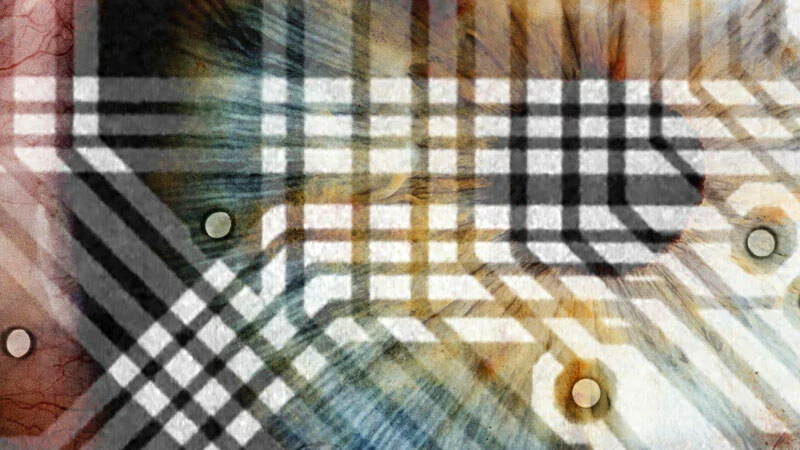
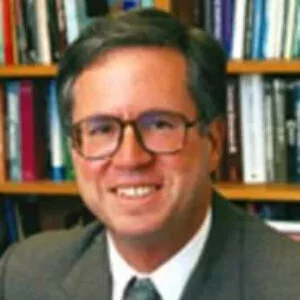
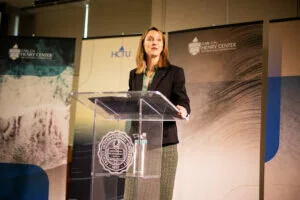
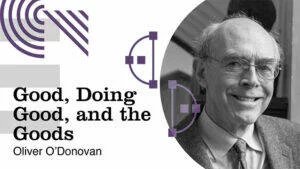
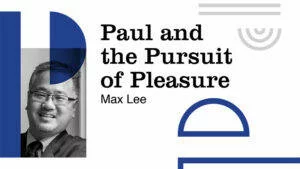


Comments
Be the first one to make a comment!